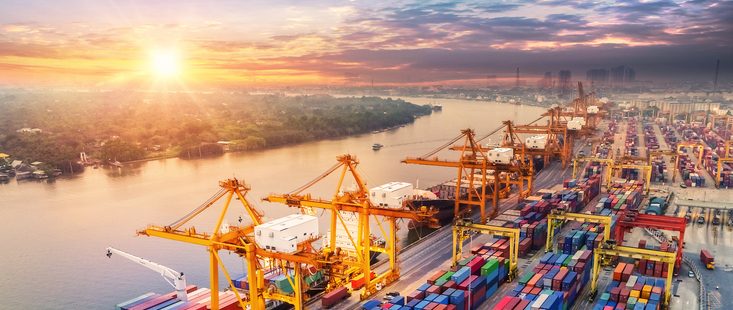Our Opinion: 2024
Red Sea crisis will lead to price rises

Every so often, we a disconnect between central banks’ statements and reality. This is typically because central banks decide they are committed to tightening or easing interest rates, but are then confronted with a sudden event that scuppers their plans. With shipping volumes through the Red Sea and the Suez Canal falling, we are now at one of those moments.
Iran-backed Houthi rebels in Yemen have taken it upon themselves to enact an effective naval blockade in the Red Sea as a protest against the Israeli war in Gaza. In the past a country would have needed a large navy to enact a naval blockade of this sort, but with the proliferation of new weapons technology in the form of anti-shipping missiles and drones, a blockade can now be put in place by non-state actors such as the Houthis.
The consequences for global shipping have been profound. According to data from the International Monetary Fund, on 27th December there were around 5.53 million metric tonnes of trade passing through the Red Sea. Just three weeks later, that had declined by 62% to 2.08 million.
When the ship Ever Given got stuck in the Suez Canal in March 2021, the volume of shipping through the Red Sea fell by 53%, which indicates that the situation created by the Houthi blockade is significantly worse for global shipping.
Unlike the blocking of the Suez Canal by the Ever Given, it is not clear how to resolve this situation. In December, the US launched Operation Prosperity Guardian, which was a convoying operation designed to keep the Red Sea open for commercial shipping. It soon became apparent that the US Navy could protect some ships some of the time by using its air defence and its quick-response helicopters. However, it could not protect all ships all of the time. Since shipping companies and their insurers require certainty in this regard, the operation proved a failure.
The recent strikes by the United Kingdom and the United States on the Houthis in Yemen have also failed to deter the group. This is not surprising, given that a Saudi-UAE alliance fought the group for nearly a decade with a force of over 180,000 soldiers and 130 warplanes (many of which were made in America) and failed to destroy them.
Shipping companies and their insurers now seem even less inclined to travel through the Red Sea because the Houthis have vowed to step up their attacks on commercial ships in response to the strikes. All of this implies that the Houthi blockade of the Red Sea is likely to last much longer than the blockage of the Suez Canal by the Ever Given. That event was part of the general trend towards supply chains breaking down during the lockdowns.
Rules and regulations, together with shortages of transport personnel, led to supply-chain disruptions that resulted in a bout of inflation. There is little reason to think that the disruptions in the Red Sea will have any other effect. Policymakers do not want to contemplate such a scenario. The recent interest-rate hikes have pushed many economies to their limits. Since December, central bankers have been suggesting that inflation is under control and interest rates might be eased. In the US this appears tied to the fact that Donald Trump is now ahead in the polls and Joe Biden is poorly rated by voters on his management of the economy. The hope among many commentators is that easing interest rates will give Biden a boost before the election.
The Bank of England’s governor, Andrew Bailey, has recently said that he does not think that the Red Sea situation is significant. “From an economic point of view – if you take the oil price, which is an obvious place to look – it hasn’t actually had the effect that I… feared it might.” But whether oil is affected or not, there are now fewer container ships full of Chinese goods heading for Europe. Tesla and Volvo have already announced that they will temporarily be halting production in Europe owing to shortages of key components.
It looks as though central banks are going to miss the boat again. Last time they overlooked the danger of inflation as they denied the impacts the lockdowns were having on supply chains and then, when inflation started to show up, they dismissed it as transitory.
This time around, however, if consumer-price indices begin to tick up, then central banks will have to pay attention. After all, their credibility is on the line and although they can bury their heads in the sand, if they start to see prices rise, they will not be able to redeploy the line that inflation is transitory. Modelling suggests that inflation follows increases in shipping rates with a lag of approximately five months. This means that, if previous experience is anything to go by, we should see an increase in inflation around May or June.
This will come just in time for the elections in both Britain and the US. Will our battered economies have to take another interest-rate hike? Time will tell.
12th March 2024
